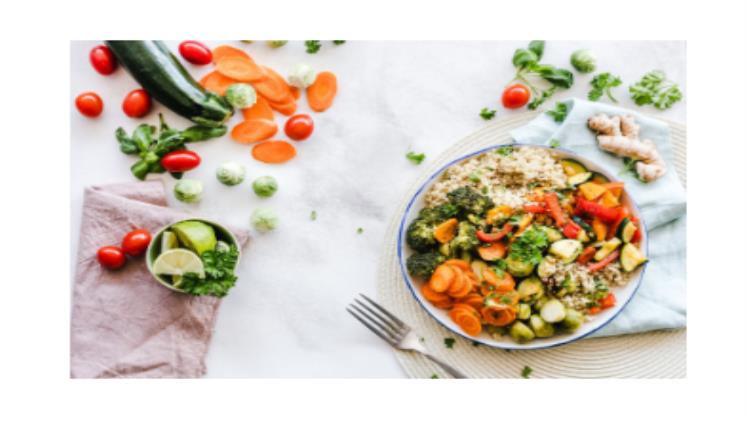Welcome to the world of calorie counting in Singaporean cuisine! If you’re curious about why calorie counting matters and how it can positively impact your diet, you’ve come to the right place. Tracking and managing your calorie intake is a fantastic way to promote healthy eating and stay within your dietary goals. Being aware of the caloric content of various foods empowers you to make informed choices whether you’re dining out or preparing meals at home. In this article, we’ll provide an overview of the calorie content in some popular Singaporean dishes, equipping you with the knowledge to make healthier culinary decisions.
Understanding Calorie Counting
Calorie counting has gained significant popularity in Singapore as people recognize its effectiveness in achieving health and fitness goals. This practice involves monitoring the number of calories consumed daily and comparing it to recommended daily intake levels. The ultimate aim is simple: consume fewer calories than you burn, enabling your body to utilize its energy reserves, thereby facilitating weight loss. You can use a calorie counter in Singapore to help you with this.
To embark on your calorie-counting journey, you must acquaint yourself with the caloric values of different foods and beverages. Armed with this knowledge, you can make mindful choices about what to include in your daily diet. While a calorie-counting app can serve as your guide, the final decisions about your food intake remain in your hands.
When you begin calorie counting, it’s essential to calculate your daily calorie needs based on factors such as age, gender, and activity level. This foundational step ensures you tailor your food consumption to your unique requirements, whether your goal is weight loss or maintenance. Once you determine your daily calorie target, diligently tracking your food and beverage intake becomes paramount.
Common Calorie Sources in Singaporean Food
Singapore boasts a rich culinary landscape influenced by diverse cultures. Like any other society, Singaporeans have their preferred dietary staples. In this section, we’ll delve into some of the most common calorie sources in Singaporean cuisine.

- Rice: Rice takes centre stage as the primary carbohydrate source in Singaporean diets. Typically served alongside dishes like curries, stir-fries, and soups, rice offers an abundant energy source due to its high carbohydrate content, delivering around 130 calories per 100 grams of cooked rice.
- Noodles: Noodles rank as another dietary staple, providing a substantial energy source through their carbohydrate content, which can reach up to 280 calories per 100 grams of cooked noodles. Often served with rich sauces or stir-fried with various ingredients, noodles contribute extra calories to Singaporean meals.
- Seafood: Seafood holds a significant presence in traditional Singaporean dishes such as chilli crab and black pepper crab. These dishes not only provide essential fatty acids and proteins but also add flavour and depth to the local cuisine.
Calorie Values of Popular Singaporean Dishes
Singapore’s culinary landscape boasts an array of mouthwatering dishes influenced by various cultures. However, many of these beloved dishes can be calorically dense. In this section, we’ll explore some of Singapore’s iconic dishes and their corresponding calorie values.
- Hainanese Chicken Rice: A beloved Singaporean classic, Hainanese Chicken Rice comprises poached chicken served atop fragrant rice cooked in chicken stock and ginger. Depending on portion size and the use of oil in cooking the rice, a single plate can contain approximately 600-700 calories.
- Char Kway Teow: Char Kway Teow is a savoury delight featuring stir-fried flat noodles with shrimp paste, beansprouts, cockles, and Chinese sausage. This delectable dish can pack up to 1,200 calories per serving due to its high-fat content from generous use of lard or vegetable oil during preparation.
- Bak Kut Teh: Bak Kut Teh, a flavorful pork rib soup simmered in spices like cinnamon, star anise, and cloves, offers a hearty meal experience. Its tenderness and aromatic qualities make it a local favourite, but it can be calorie-intensive, containing varying amounts of fat and protein.
Tips for Monitoring Calories when Enjoying Singaporean Food
Indulging in Singaporean cuisine while keeping an eye on your calorie intake can be a rewarding experience. Here are some practical tips to help you maintain dietary awareness without missing out on the culinary delights.
- Portion Control: Singaporean dishes are often served in family-style or generous portions. To enjoy these dishes without overindulging in calories, consider sharing a dish with a friend or family member when dining out.
- Opt for Healthier Cooking Techniques: Select dishes prepared using healthier cooking methods like steaming or grilling instead of deep-frying or excessive oil and sugar use. These techniques can help reduce calorie content while preserving flavour.
- Embrace Vegetables: Incorporate more vegetables into your meals. Vegetables offer fewer calories per serving compared to meat proteins and carbohydrates. They add nutrients and fibre to your diet, promoting a feeling of fullness.
Conclusion
In summary, calorie counting in the context of Singaporean cuisine is a valuable tool for anyone seeking to monitor their dietary intake. With its user-friendly interface, comprehensive nutritional data, and diverse food items, calorie counting can empower individuals to make healthier food choices. By harnessing the benefits of calorie counting, individuals can track their daily calorie consumption and make informed decisions about their diet, all while savouring the delightful flavours of Singaporean cuisine.


